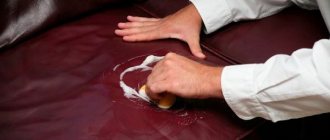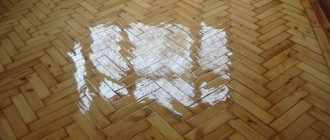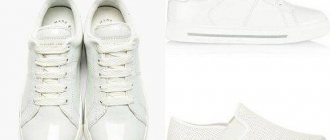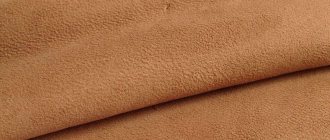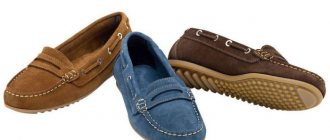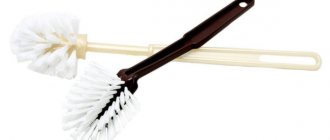Modern clothing and footwear made using special membrane material are becoming more and more accessible to a wide range of buyers.
If initially the membrane was used to create specialized lightweight, windproof and waterproof clothing for winter sports, today it is used to make everyday jackets and comfortable clothing for children and adults.
Features of the material
Membrane fabric is a breathable material made of synthetic fiber, which is characterized by a large number of tiny holes and is characterized by:
- Waterproof. The higher the number of this indicator, the better the membrane material resists moisture penetration. A coefficient of 10,000 indicates that the fabric will not get wet in heavy rain.
- Vapor permeability. The structure of the synthetic fabric is such that it allows steam to escape, removing excess heat and moisture from the body. This provides comfort during high physical activity in cold weather. The higher the vapor permeability index, the better the quality of the material.
- Windproof. The membrane reliably protects from wind.
The clothes use two-layer and three-layer membrane fabrics. The outer layer consists of ordinary matter, the inner layer is made of membrane fabric. There may also be a bottom layer of knitted mesh.
The membrane itself is not insulation; it creates comfort provided that a person moves intensively, generating heat. Therefore, a winter envelope for a newborn, clothes for a sedentary child, in addition to the membrane, must contain vapor-permeable synthetic insulation.
Washing rules
In order not to spoil the high-tech material, you need to know how to care for membrane clothing. Synthetic fabric has a porous structure, and these tiny pores become clogged with sweat and dirt over time. A child's walks often result in dirty clothes, despite the applied impregnation with water- and dirt-repellent properties.
A contaminated membrane has reduced vapor permeability, so regular washing is necessary. But at the same time, membrane items should be washed as rarely as possible - any impact reduces the strength of the fibers and the functional properties of the material are lost over time.
To properly wash membrane clothing, follow these principles:
- Do not use fabric cleaning or bleaching products, primarily those based on chlorine - it destroys the membrane and the fabric will become wet;
- It is forbidden to wash with ordinary washing powder and liquid detergents, including those for delicate washing - they can clog the smallest pores, causing the material to stop releasing steam;
- washing items is allowed only at the temperature indicated on the product label (30-40 degrees depending on the type of material) - heating harms the structure of the fabric, for the same reason it is forbidden to boil or iron the product;
- For washing, it is allowed to use only special products marked “for sportswear” or “for membrane fabrics.”
When purchasing this type of clothing, it is recommended to immediately purchase a detergent for washing membrane fabrics - its price is quite high, but due to the economical consumption, the cost of one wash is low.
If you don’t have special equipment at hand, and you need to wash the membrane jacket urgently, you can use simple laundry soap. In this case, the item is not soaped, but dipped in warm soapy water. It is important to rinse the clothes several times and next time be sure to use a special product to remove any remaining soap from the membrane pores.
It is recommended to wash membrane clothes by hand. If the label says machine washable, select the delicate cycle.
When washing in a washing machine, be sure to program the lowest speed for rinsing and completely disable the spin option - rotating the item in the drum even at relatively low speeds leads to water mechanically damaging the structure of the porous material.
If the manufacturer has not indicated the possibility of machine washing, do not experiment - there is a high risk of material delamination, membrane destruction, deformation and damage to fasteners.
Note! To keep your jacket clean and wash it as little as possible, scrub dirty areas with clean warm water using a fluffy brush or foam sponge.
Caring for new shoes
When buying new shoes with a membrane frame, you don’t have to immediately start fussing about treating them with impregnations and dirt-repellent agents, as we would do with shoes or boots made from natural materials.
By default, boots brought from the store are equipped with “Durable Water Repellent” type protection, which makes any additional actions on the shoes after purchase pointless.
True, this purchased layer does not last long, so you will still have to purchase your own “waterproofers”. It must be applied after each shoe wash and then be sure to leave it on for one to two days without wearing it when going out.
Traditional methods
Unfortunately, traditional methods, such as applying an impermeable layer with petroleum jelly or baby cream, as is often recommended to do with leather shoes, are not suitable for a membrane pair. Of course, there will be an effect and the boots will become less susceptible to moisture for some time, but you will also have to say goodbye to the ventilation provided by the model.
Even a small amount of inexpensive cream can be used wisely and your new boots will delight you with their appearance for a long time. To do this, use a home secret:
- apply a thin layer of cream (paste) to the shoes;
- Using a hairdryer with the heating mode set to medium, slowly warm up the treated product;
- from the warm air, the skin pores will expand and the second layer of cream will be absorbed better and will not require renewal longer.
It is important not to overdo it with the temperature and hold the hairdryer in such a way that the heat washes over the entire surface of the shoe, and does not hit a directed wave.
Professional products
When buying new shoes, if you want to wear them for more than one season, you need to take care of purchasing two basic products, without which high-quality care for the new ones is not possible. This is a dirt cleaner and impregnation. We present products that have earned the trust of customers for use in membrane shoes:
In addition to the necessary set of shoe cosmetics, you need to have a brush that is suitable for the type of care for a particular pair, cloth napkins and, ideally, wooden spacers for drying after washing.
In fact, you need to try hard to damage the membrane itself, and it is almost impossible to do this with shampoos or impregnations. However, the membrane is very sensitive to mechanical damage and sand or small stones that get into the shoes can cause significant damage to the frame. In this case, only a stream of running water will help, running into the shoe and washing the shoe frame from the inside until traces of dirt are removed from there. Before the procedure, the insoles are removed and then dried separately from the shoes.
Source
Hand wash technology
Let's look at how to wash a jacket with a membrane. When using special products, washing items without pre-soaking is allowed. But if the product is heavily soiled, it is dipped into a basin with a dissolved product and left for one and a half to two hours.
In order not to damage the product, when washing by hand, you should not rub items of clothing against each other, squeeze out the material, strongly deform it, or “collapse” inflated bubbles from waterproof fabric.
The most contaminated areas on the outside of the jacket (primarily the collar, cuffs) can be gently rubbed with a foam sponge or fluffy brush dipped in the water in which the clothes are washed.
To rinse the item, place it in a bowl of clean, cool water for 15-20 minutes. Then take it out, let the excess water drain, and then immerse it again in a basin with fresh clean, cool water. This time, carefully remember the jacket with your hands. It is recommended to rinse the washed item for the third time in water with a dissolved antistatic agent.
You cannot wring out membrane clothing - just let the excess water drain (you can put the item in a net and hang it over the bathtub). Then the jacket is straightened, all zippers are fastened so that they do not become deformed, and hung on hangers or a dryer.
Dry the product away from direct sunlight and heating devices. Do not dry it in the drum of a washing machine with dryer or in a special unit, use a hair dryer, fan heater or iron. Do not iron the membrane fabric.
how do I wash the membrane
This post is for those who want to buy a used membrane item from me, but have doubts about the condition of the membrane.
I thought for a long time whether it was worth spending money on a used item or buying a new one. after 2-3 calls and funny comments like “all conditions of care have been met” (as a result, the owners do not know what the care consists of and start talking such nonsense!!!!), I decided to buy a new one.
what not to do with the membrane
1. You can’t rub with soap!!!!!!! New generation membranes are porous and soap destroys them. The proper functioning of the membrane is disrupted. For me, the question about soap is closed. There is an opinion that you can do it with ordinary household goods (well, people with their “Why! I wash it with affection! It washes!” - or even with grandma’s white, then don’t sell it to others!)
2. Do not soak!
3. Do not use chlorine-containing powders! only special means!
4. Do not machine wash or wring! IMHO! Even in delicate mode, a chipped drum (old or improperly maintained) can damage the coating. I just see what my 5 year old machine does to jeans.
5. Do not dry in direct sunlight or in an unventilated area!
6. store straightened out vertically and in a bag. ventilate
7. Do not iron!
If you are a fan of machine washing or are greedy for special care products, or are a mother of 3 children with a lack of time and energy, buy “rubberized” sets. They are very comfortable, but do not breathe. how I wash: (similar to skin care)
A. Cleaning with a fully buttoned item with a soft toothbrush and water, I wash away all the dirt. I apply collonil shampoo to particularly contaminated areas. Almost immediately I brush those areas again. the fabric cleans quickly.
b. rinse, then I use 1 capful of liquid membrane detergent (it is very concentrated) from Sportsmaster on a large basin. I wash it and rinse it in plenty of water (30-40g).
V. impregnation without squeezing it hard, put it to dry in a horizontal position. From a distance of 20 cm I spray the water-repellent collonil over the entire surface. After half an hour or an hour another layer is absorbed. When the membrane dries, you can turn it out and dry the inner layer vertically.
The main thing is to wash it before the first use, so that the water-repellent layer does not allow dirt to penetrate into the deeper layers and is easy to clean. Then a brush and water is enough. in the process of wearing
Be sure to wash it if you see that the fabric is heavily soiled (this is a double-edged sword - washing it often is not recommended, but the membrane also needs clean pores for good functioning).
First, it’s better to find out what kind of membrane you have https://www.tourakademy.ru/tematic/outdoor_materials/outdoor.htm
Here's about the means:
Innovative impregnating spray with nanoparticles to protect clothing and shoes at the molecular level. Suitable for smooth leather, suede, nubuck, velor, textiles and High Tech materials, including Gore-Tex membranes. Forms a protective coating against moisture, dirt, salt and chemicals. Preserves the breathability of the leather, the brightness and depth of the color of the product. Recommended for regular use.
In general, I never recommend using a light membrane! (a year later) although we wear light milk and the fabric cleans perfectly.
Rules of care
Caring for membrane clothing includes treating it with a water-repellent agent. A special spray is applied from a can onto the washed and dried item. It is important to choose the right aerosol - it should be intended specifically for membrane clothing. Impregnation allows you to maintain high water-repellent properties of the membrane material.
Follow the storage rules:
- Only washed items are placed in storage;
- there should be no strong-smelling substances nearby (mothballs, etc.);
- the storage place must be dry;
- suits and jackets are stored flattened.
With proper care of things, clothes made from membrane materials will last as long as possible.
Has anyone washed ECCO shoes with Gore-Tex membrane in the washing machine?
Because You are not logged in. To come in.
Because you are not a trust user. How to become a trustee.
Because The topic is archived.
Because You are not logged in. To come in.
Because you are not a trusted user (phone number is not verified). Enter and confirm your phone number. Read more about trusts.
Because The topic is archived.
Because You are not logged in. To come in.
Because you are not a trusted user (phone number is not verified). Enter and confirm your phone number. Read more about trusts.
Because The topic is archived.
Because You are not logged in. To come in.
Because you are not a trusted user (phone number is not verified). Enter and confirm your phone number. Read more about trusts.
Because The topic is archived.
Because You are not logged in. To come in.
Because you are not a trusted user (phone number is not verified). Enter and confirm your phone number. Read more about trusts.
Because The topic is archived.
Because You are not logged in. To come in.
Because you are not a trusted user (phone number is not verified). Enter and confirm your phone number. Read more about trusts.
Because The topic is archived.
Because You are not logged in. To come in.
Because you are not a trusted user (phone number is not verified). Enter and confirm your phone number. Read more about trusts.
Because The topic is archived.
Because You are not logged in. To come in.
Because you are not a trusted user (phone number is not verified). Enter and confirm your phone number. Read more about trusts.
Because The topic is archived.
Because You are not logged in. To come in.
Because you are not a trusted user (phone number is not verified). Enter and confirm your phone number. Read more about trusts.
Because The topic is archived.
Because You are not logged in. To come in.
Because you are not a trusted user (phone number is not verified). Enter and confirm your phone number. Read more about trusts.
Because The topic is archived.
Because You are not logged in. To come in.
Because you are not a trusted user (phone number is not verified). Enter and confirm your phone number. Read more about trusts.
Because The topic is archived.
Because You are not logged in. To come in.
Because you are not a trusted user (phone number is not verified). Enter and confirm your phone number. Read more about trusts.
Because The topic is archived.
Because You are not logged in. To come in.
Because you are not a trusted user (phone number is not verified). Enter and confirm your phone number. Read more about trusts.
Because The topic is archived.
Because You are not logged in. To come in.
Because you are not a trusted user (phone number is not verified). Enter and confirm your phone number. Read more about trusts.
Because The topic is archived.
Because You are not logged in. To come in.
Because you are not a trusted user (phone number is not verified). Enter and confirm your phone number. Read more about trusts.
Because The topic is archived.
Because You are not logged in. To come in.
Because you are not a trusted user (phone number is not verified). Enter and confirm your phone number. Read more about trusts.
Because The topic is archived.
Because You are not logged in. To come in.
Because you are not a trusted user (phone number is not verified). Enter and confirm your phone number. Read more about trusts.
Because The topic is archived.
Because You are not logged in. To come in.
Because you are not a trusted user (phone number is not verified). Enter and confirm your phone number. Read more about trusts.
Because The topic is archived.
Shoes
In boots or shoes, the vapor-removing membrane layer is located between the outer covering of the shoe and the insulation. Despite the fact that the delicate high-tech material is protected on both sides, it remains sensitive to various types of impact:
- when shoes are constantly dirty and wet, the smallest particles of dirt can penetrate the outer layer and clog the pores of the membrane or form a vapor-proof film;
- heating is detrimental to the membrane inside the shoe;
- destruction is facilitated by aggressive chemicals - reagents used to treat roads and sidewalks in winter.
Caring for membrane shoes includes regular cleaning - it is recommended to remove dirt from their surface after each walk. It is important to follow the cleaning rules:
- membrane shoes or boots are carefully washed with warm (not hot) water, cleaned with a soft brush or cloth;
- heavy contamination is removed using liquid or bar toilet soap - household soap is aggressive for shoe materials;
- Shoes need to be thoroughly dried before wearing, since ice freezes on a wet surface at subzero temperatures and prevents the membrane from allowing steam to pass through.
Shoes containing membrane material should be washed, cleaned and dried according to the same principles as regular shoes. To dry shoes or boots, it is recommended to stuff them with crumpled newspapers.
To avoid damaging the membrane, do not use a special electric shoe dryer, place shoes or boots near a radiator or fan heater, or expose them to direct sunlight.
Seasonal shoes with constant wear in autumn, winter or spring must be treated regularly (about once a week) with a water-repellent spray. This will prevent contaminants from penetrating the membrane and deteriorating its functional characteristics.
Proper care of membrane shoes
Normally, the production technology of modern shoes with a membrane frame includes a high air permeability of the finished product. For this reason, the surface of shoes or boots made using this material is covered with fabric, fiber product or nubuck, which has sufficient porosity. However, after accidentally going out in the rain, and even if the shoes have not been cleaned of dust for some time before, the permeability feature of the product turns into a disadvantage - the pores of the surface layer, filled with particles of dry dirt, get wet and form a kind of impenetrable film.
